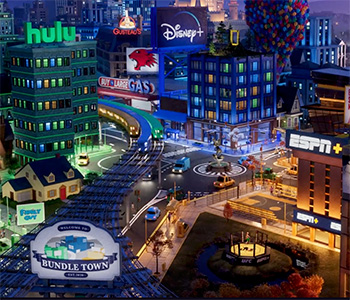Tip #1473: Lunar Animation: Mac Pro Big Help in VFX
… for Visual Effects
Tip #1473: Lunar Animation: Mac Pro Big Help in VFX
Larry Jordan – LarryJordan.com
The high-end Mac Pro vastly speeds creating animation & VFX assets.


Lunar Animation wrote a detailed blog about how using high-end Mac Pros enabled their animation activities over the last year. Their blog “looks at the noticeable things that this machine really helps with once you start working as an artist.”
NOTE: Here’s the link
The following are excerpts from their blog.
Today we’re going to give a 12 month 3D computer animation perspective on the Mac Pro and Pro Display XDR. We really push our computers hard on a daily basis and benchmarks don’t always reflect real world use on a project. So in this post we will focus on how the Mac Pro has affected our current workflows and how it’s opening up new and exciting workflows for the future.
We currently have two Mac Pros in the studio, we have a mid-tier model which has the 16-core CPU and dual graphics cards and then a higher tier 28 core model, which has four graphics cards. Now I know what you’re thinking, why on earth would you want four graphics cards? Well we’ll get to that later in the post.
Their software includes:
- MAYA – 3D Modelling and Animation
- V-RAY – Rendering Engine for Maya
- HOUDINI – Simulation and Effects
- NUKE – Compositing
- DAVINCI RESOLVE – Editing
- SUBSTANCE PAINTER – Shading and Texturing
- ZBRUSH – 3D Sculpting
- ADOBE PHOTOSHOP – Image Editing
- DEADLINE – Render Management Software
[What using a high-end Mac Pro ] means is that rather than having to close the heavy scene, load up the 3D model we want to adjust and then close that and reopen the original scene to continue working, we are able to simply switch spaces in macOS, add a light to a 3D model and quickly switch back and check the update with the interactive IPR renderer.
Then while we’re waiting for that to create a preview render, we can switch over to another screen and adjust another model.
What we’re seeing here is the fluidity of the artist working and not having to be ground to a halt because the computer is having to think. It feels like having multiple computers at your fingertips. All without constant crashing, which means we avoid losing work and more importantly save artists’ time.
The entire blog is a tour de force and well worth reading. And the behind-the-scenes video is amazing.


Leave a Reply
Want to join the discussion?Feel free to contribute!